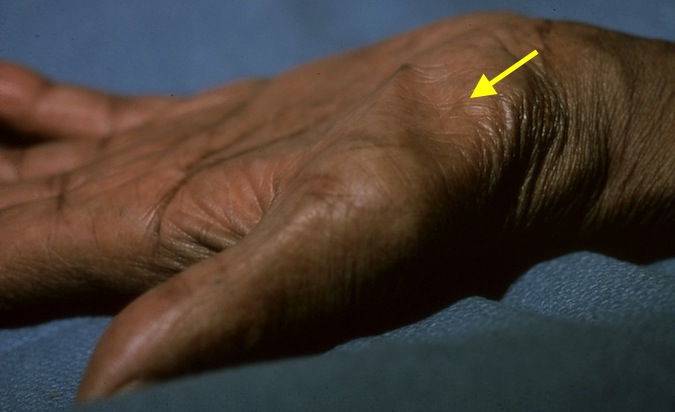Flexor Pollicis Brevis (FPB) Exam
FBP Muscle Data:
- Origin: Flexor retinaculum and trapezium bone.
- Insertion: Lateral side of the base of the proximal phalanx of the thumb.
- Innervation: Both the median nerve (superficial head) and the ulnar nerve (deep head).
- Nerve: Median nerve (for the superficial head) and ulnar nerve (for the deep head)
FPB Muscle Testing
When assessing a thumb injury for signs of flexor pollicis brevis (FPB) laceration, the aim is to determine whether the FPB tendon is completely severed, partially transected, or intact. While assessing this muscle, the examiner must also recognize that isolated FPB lacerations are uncommon and typically part of a thenar muscle group injury. The examination of an uninjured FPB musculotendinous unit employs the 0 to 5 muscle testing grading system. Zero indicates a total loss of flexor pollicis brevis (FPB) contraction, while a grade of 5 signifies normal FPB function capable of contracting against full resistance. Detailed guidelines on graded muscle testing are provided below. Full muscle testing is often challenging in the case of acute laceration due to pain and tenderness. However, the examiner should gently assess the contraction of the potentially injured musculotendinous unit as thoroughly as possible. The main objective of the exam is to determine preoperatively whether the muscle is fully, partially cut, or intact. To evaluate the FPB, position the patient's hand and upper extremity with the forearm in mid-rotation and the wrist in a neutral position, with the ulnar side of the hand resting on the table. The thumb should be in a resting posture.
With the ulnar side of the patient's hand supported by the table, the examiner instructs the patient to pinch the tip of the thumb against the tip of the index and long fingers. This position puts the thumb in mild abduction and mild MP joint flexion. While the patients to maintain this position the examiner tires to assess the contraction of the thenar muscles including the FPB while also assessing the MP flexion of thumb MP joint. The resistance to flexion will vary based on the degree of injury to the FPB muscle and on the discomfort caused by the examination.
Definition of Positive Result in FPB Muscle Testing: A normal result is a positive one. During a normal muscle test, the examiner should observe a normal muscle contraction that can move the joint or tendon against full resistance.
Definition of Negative Result in FPB Muscle Testing: The thenar muscles including the FPB should be observed, palpated, and compared to the uninjured side. An abnormal result in muscle testing is a negative one. During a partially abnormal muscle test, the examiner should observe an abnormal muscle contraction that can move the joint or a tendon but not against normal resistance. In a complete denervation injury, such as a median motor branch laceration or a complete median nerve palsy, there will be no evidence of any muscle contraction, and the muscle testing grade will be zero.
In a patient with a laceration of the thenar muscles and specifically the FPB the thumb MP joint may not actively flex with full strength due to complete transection (cut) of the FPB tendon or muscle. This results in an abnormal muscle testing. However, these observations also indicate a potentially complete FPB laceration requiring surgical repair. Therefore, this negative muscle testing exam will be positive for a probable FPB laceration.
